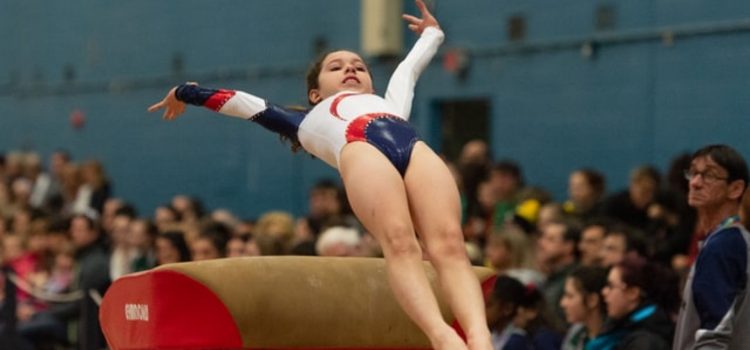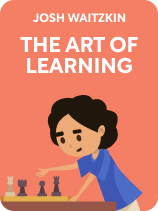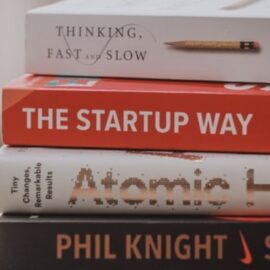

This article is an excerpt from the Shortform book guide to "The Art of Learning" by Josh Waitzkin. Shortform has the world's best summaries and analyses of books you should be reading.
Like this article? Sign up for a free trial here .
What is the key to athletic success? What do the world’s greatest athletes do differently?
According to American tai chi champion Josh Waitzkin, when it comes to competing in the top league, it’s not skill or technical mastery that makes an athlete stand out—it is creativity. Your creativity is a unique asset—just like every musician makes their own music, you’ll express your skill in a way unique to you.
Here’s how to find your creative style as an athlete.
Develop Your Creative Style
Everyone near the top of an athletic discipline has achieved technical mastery. Because of this, Waitzkin says, athletic success is not a matter of skill, but creativity. Think of great Olympians, like the American skier Lindsey Vonn or the Jamaican sprinter Usain Bolt—they each compete like nobody else does.
To make optimal use of your personal style, Waitzkin argues that you can systematize it, harnessing one-off creative moments to develop a repertoire of skills that are unique to you. Experimenting in practice can lead to such insights—for example, you might come up with a new basketball dribbling rhythm that better enables you to dodge past defenders.
(Shortform note: Waitzkin’s perspective makes sense of why some musicians succeed and others don’t. In hip-hop, those at the top have distinct, one-of-a-kind styles. Kanye West, for example, composes and produces music that’s in a class of its own; Kendrick Lamar brings an intensity and lyricism that no one can imitate; and so on. Yet hip-hop has no formal training centers. We can wonder, then, if Waitzkin’s personal way of systematizing excellence would be useful in other disciplines, or if it might encroach on individuals’ unique approaches to learning.)
As you develop your personal techniques, you render yourself ever more competitive. Opponents won’t have any experience with your repertoire, giving you an edge in the critical moments.
(Shortform note: In Black Box Thinking, Matthew Syed discusses how the Mercedes F1 racing team developed a unique set of tactics and techniques that no other team had. They did so by incrementally developing their process, finding points of weakness, and figuring out how to improve them. For example, they optimized their pit stop routine until they could complete it in less than two seconds. F1 racing is far from Waitzkin’s single player, one-versus-one skills, demonstrating that his principles apply even more broadly than he explains.)
Turn Creative Insights Into New Techniques
Waitzkin explains that when neither you nor your opponent can win with technique alone, victory depends on flashes of creative action. In other words, you intuitively sense an opportunity and act on it in a new way. You might, for example, intuit a new tennis strike that gives you a fractional advantage, off-balancing your opponent just enough to eke out the point.
To systematize these insights into your unique creative style, Waitzkin suggests building off the top of your “pyramid” of understanding. Here’s how his method works:
- Remember the earlier notion of building up layers of chunks. This is the technical foundation for your skill: knowledge of the elements and how they relate.
- As you develop your skill, you build layers of understanding, each atop the previous. Atop the fundamentals you layer intermediate principles and patterns; atop those you layer ever more complex rules and exceptions to the rules.
- After you’ve reached a high level of skill, you don’t need to keep studying established methods. Because you deeply understand the elements and principles of your skill, you’ll naturally make creative leaps as you practice. When you do, you gain a glimpse of the next layer up—a layer of skill that you can only reach by developing your personal style.
- To systematize these creative insights, find some way to record your practice—Waitzkin recommends recording your practice sessions. Then, review the videos to study what happened. You can take what arose as instinct and work out its technical underpinnings.
Now you’ve converted a creative insight into a concrete technique, rendering it practicable. Repeat this enough, following your creative disposition, and you’ll develop a repertoire of one-of-a-kind tactics that align with your personal style.
(Shortform note: In Black Box Thinking, Matthew Syed quotes Steve Jobs, who said that “creativity is connecting things.” Though Waitzkin suggests that creative insights come from instinct, we can use Jobs’s interpretation to consciously create new techniques. For example, say you’re a snowboarder. You notice that downhill skiers consistently tuck down to gain speed, and you realize you could use that to better retain speed on the halfpipe. Or, maybe you realize that the bulky clothing typical of snowboarders could be swapped out for tight-fitting skier-style clothing, which is more aerodynamic. In this way you can train your creative muscles by actively connecting disparate ideas, instead of just waiting on your intuition to do it for you.)
Waitzkin describes how he developed a new repertoire of tai chi techniques by refining creative intuitions taken from high-level sparring. He and his partner were so evenly matched that only their creative instincts could secure the win. They recorded their matches, codified those insights, and gradually built up a new layer of unique, novel techniques.
(Shortform note: For an example of another world-class performer with a repertoire all his own, just think of Jimi Hendrix. Hendrix was a legendary guitarist of the ‘60s who was known for his virtuosic guitar playing and on-stage theatrics. He’d play guitar solos with his teeth, sling the guitar around his body while performing, use effects pedals to create wild sounds, and set his guitars on fire. While Hendrix didn’t systematize his performance states like Waitzkin does, he still demonstrates that stand-out artistry comes from fearlessly expressing your own creative style.)

———End of Preview———
Like what you just read? Read the rest of the world's best book summary and analysis of Josh Waitzkin's "The Art of Learning" at Shortform .
Here's what you'll find in our full The Art of Learning summary :
- Life advice from chess prodigy and tai chi World Champion Josh Waitzkin
- Detailed looks at the psychological and technical sides of skill-building
- How to build any skill from the bottom-up






